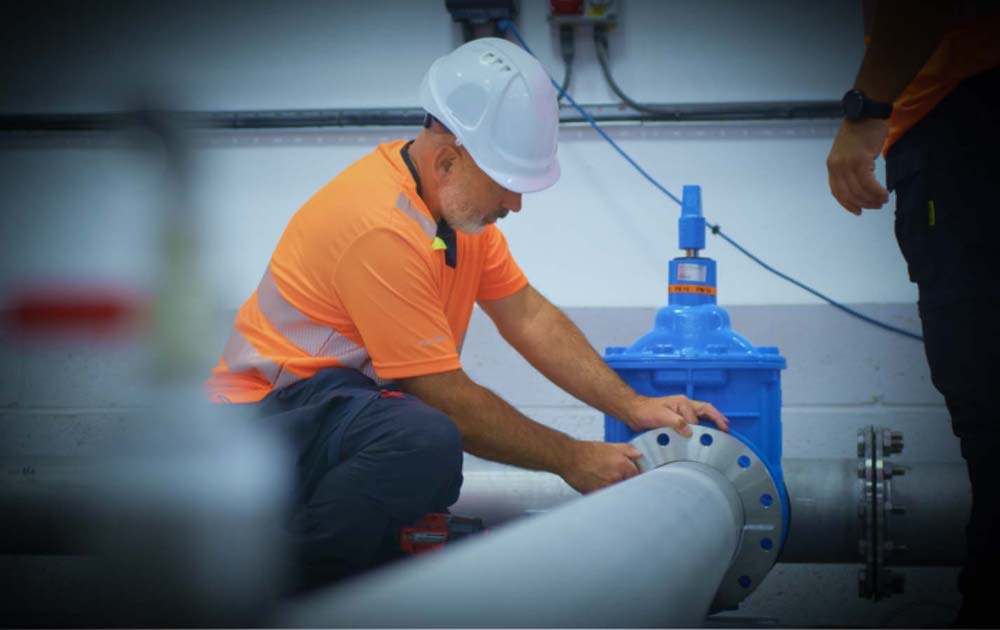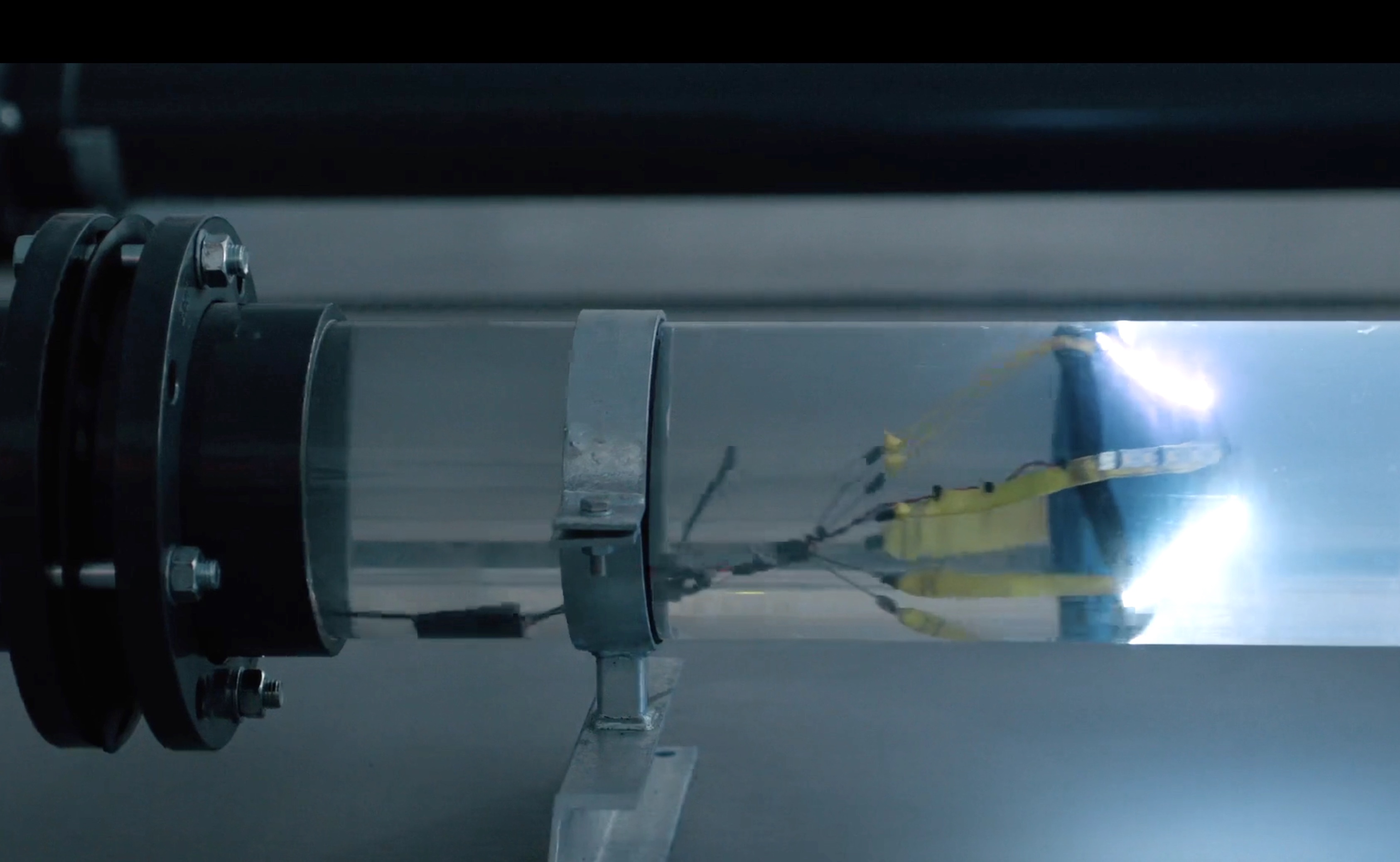
- Details
- By Chez Oxendine
- Economic Development
The next digital highway for tribal nations could flow through their water pipes.
A new partnership between Native-owned broadband consultancy Tribal Ready and tech startup Aqualinq aims to thread fiber optic lines through existing water infrastructure, potentially cutting installation costs and stretching limited federal dollars as tribes race against grant deadlines to connect their communities.
The approach could reduce broadband deployment expenses by cutting the costs required to bury fiber lines in the ground or hang them from utility poles, Tribal Ready CEO Joe Valandra told Tribal Business News. For tribes struggling with rising costs, material shortages and dwindling funds from the $3 billion Tribal Broadband Connectivity Program (TBCP), the water-based solution offers a path around mounting obstacles.
“We've been looking for ways to make that money go as far as possible. Through a combination of inflation and demand for things that go into building a network, the price tag keeps getting higher,” Valandra told Tribal Business News. “That was the first thing that caught our attention — those cost savings mean more fiber can be pulled and made available to the community.”
Information flow
Aqualinq’s technology works by attaching network nodes to above-ground points, then stretching fiber lines through water pipes. The fiber is inserted using small parachutes that catch on flowing water, move down through the pipe, and are then pulled back up for routing where they need to go next.
Aqualinq’s Ian Deacon said the technology was engineered to piggyback off of existing tools used by water utilities.
“It’s easy, and it’s safe — it doesn’t affect the flow of the water at all; we’re very careful about that,” Deacon said. “There’s no noticeable change to the water network.”
 An Aqualinq installation utilizes parachutes, like the one pictured, to catch on water flows and pull cabling through pipes without disturbing the infrastructure. (Photo provided by Aqualinq.)
An Aqualinq installation utilizes parachutes, like the one pictured, to catch on water flows and pull cabling through pipes without disturbing the infrastructure. (Photo provided by Aqualinq.)
Safety concerns were a sticking point for Tribal Ready, which wanted to be able to pitch the tech as safe for use and easy to adopt.
It took roughly 18 months for Aqualinq to prove their use case, Deacon said. To do that, the company, a subsidiary of New York City-based LWF Group Inc., showed a Tribal Ready representative an Auqalinq installation in Madison County, Ky. and highlighted another installation in Anacortes, Wash.
In Kentucky, Aqualinq connected an emergency operations center to radio towers via fiber strung through water pipes. A case study published on Aqualinq’s website shows the Kentucky installation cost roughly half of what a traditional, underground buildout would have required. The operation was completed in just one month, after Madison County officials spent six months attempting the buildout using underground deployment, the company claims.
The installation worked well enough that the operations center now has local internet service providers (ISPs) inquiring about leasing the fiber connections for their own work, according to Deacon.
“There’s been a lot of skepticism around the technology, because it’s so different and so novel,” Deacon said. “[Tribal Ready was] giving us a tough time, but they were asking about the right things, and we were coming up with the right solutions.”
Valandra said Tribal Ready, which helps tribes stand up their own ISPs and build out networks, wanted to be certain of the product.
“We were a little tough on them, because we knew our (Native) partners would be tough on us,” Valandra said. “We wanted to make sure we had overdone our homework.”
Rising prices, dwindling time
Aqualinq’s technology would suit tribes with existing water utilities that serve many customers, Valandra said. If the water infrastructure on a reservation or in a community is in working order, running fiber through the pipes makes the “most sense economically,” he said.
Traditional fiber deployment costs continue to climb. Data from the Fiber Broadband Association, a nonprofit technical assistance and advocacy group, shows costs to deploy fiber are rising annually. In a 2023 report on fiber costs, the group found underground deployment costs ranged from $11 to $24 per foot, while aerial deployment (i.e. hanging on utility poles) costs ranged from $4 to $9 per foot.
A 2024 updated report showed costs climbed slightly, reaching $27 per foot for underground deployment and $14 for aerial deployment. The report noted that costs were expected to “cool slightly” in 2025, but many tribes may not have time to wait for prices to drop.
Deacon says Aqualinq’s technology, on average, could cut 30% of typical installation costs. He pointed to the case study around Madison County, where Aqualinq’s technology cut costs by a reported 50%.
Those savings could prove crucial as tribes race to spend federal broadband grants. Many tribal recipients of TBCP funding are still in the environmental review phase of their projects, with four-year grant clocks ticking. Now in year two, tribes face uncertainty about extensions under the Trump administration, according to Valandra.
“The feedback we're getting from federal sources is that if the project isn't shovel in the dirt — or (in this case) fiber in the waterline — an extension is not a given,” he said.
Beyond cost and time savings, the technology could offer additional benefits to tribes. For tribes with water systems already in place, the installation process is relatively simple and creates workforce development opportunities and water-monitoring capabilities, according to Tribal Ready VP Tom Valandra.
“We're trying to build workforce development or training for tribes so they can do this on their own,” Tom Valandara said. “Anyone who is a plumber or even has a little experience with the technology could learn to do this.”
The technology has limits in Indian Country, where water infrastructure challenges would prevent many tribes from using Aqualinq's approach. A 2016 House Committee on Natural Resources report found 48% of tribal homes lacked running water, and the Indian Health Service says about 5,200 homes still lack safe water access. Aging pipes and unconnected rural homes present additional barriers.
But for reservations with existing water utilities and adequate infrastructure, the technology might be a viable solution as deployment costs rise and federal support drops, Joe Valandra said.
“The idea is to make the money you have go as far as possible,” he said. “By not having to incur the costs of drilling, trenching, or the costs of acquiring and paying the ongoing cost for pole attachments, I think tribes can make that happen.”
